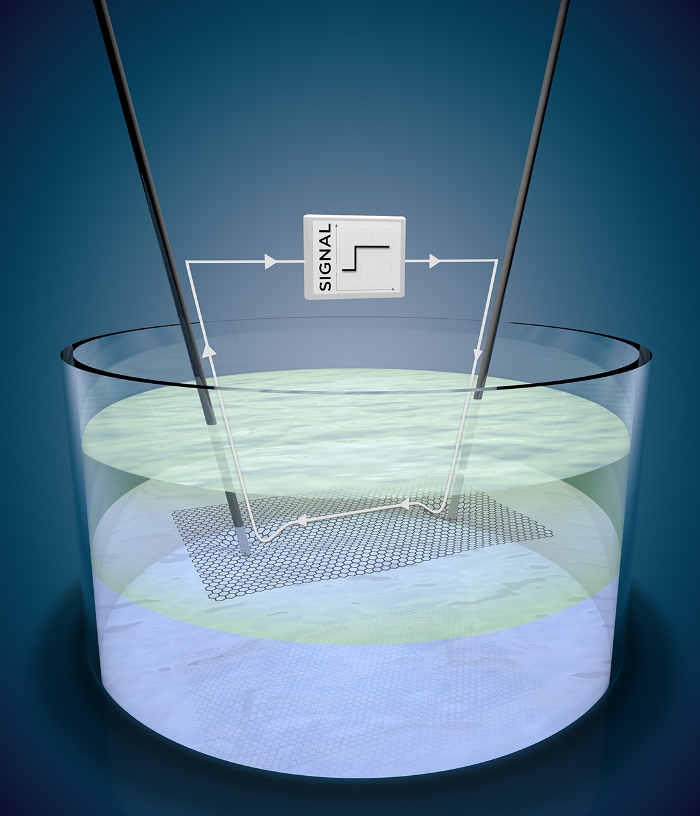
Transfer of graphene by molecular caging
Chemists developed a new graphene-transferring method which makes use of cyclohexane. This new method leaves less impurities on graphene, is easier to handle than current methods and is widely applicable in graphene research. The publication will be on the cover of the journal ACS Central Science late December.
Clean transportation
PhD candidate Liuba Belyaeva conceived this new method under the supervision of Prof. Grégory Schneider. In their lab, they grow graphene on metals such as copper. However, to use graphene for research or applications it needs to be transferred to other materials – a difficult process. ‘Polymers are often used for the transportation of graphene, but this method leaves pollutions on graphene. Other polymer-free methods often result in cracked and folded graphene,’ Belyaeva says. Her new method differs because it keeps graphene intact and lacks the usual polymer contamination.
Two fluids
To transfer the graphene to a supporting material, Belyaeva mixed graphene with water and cyclohexane – two fluids at room temperature. ‘When reducing the temperature to two degrees Celsius, the cyclohexane solidifies. The graphene becomes attached to the solid cyclohexane, after which the cyclohexane-graphene stack can be removed from the water,’ Belyaeva explains.
New method
The scientists think their new method could be useful for researchers working with graphene. ‘After making graphene, there is always the difficulty of handling it,’ says Belyaeva. ‘We think this method could become a very common transfer method, because it is easier and cleaner than all the current methods.’
Interesting properties
After the discovering the new method, Belyaeva and her colleagues investigated the electronic properties of graphene in the water-cyclohexane mixture. Surprisingly, the graphene showed improved conductive properties. The charge carriers of graphene in the two liquids are less scattered than of graphene supported by a solid substrate. Furthermore, the two liquids act like a cage, resulting in less air contamination of graphene. These improved properties are interesting, as they can enable sensing at liquid-liquid interfaces.
NeCEN and Delft collaboration
Together with NeCEN and researchers from the TU Delft Schneider's group will determine the properties of graphene transferred with the new liquid-liquid caging method. Belyaeva: ‘We are planning to pattern atomically-resolved graphene nanostructures with an electron beam. Having clean graphene without polymer contamination is crucial for the fabrication of such fine structures.’

